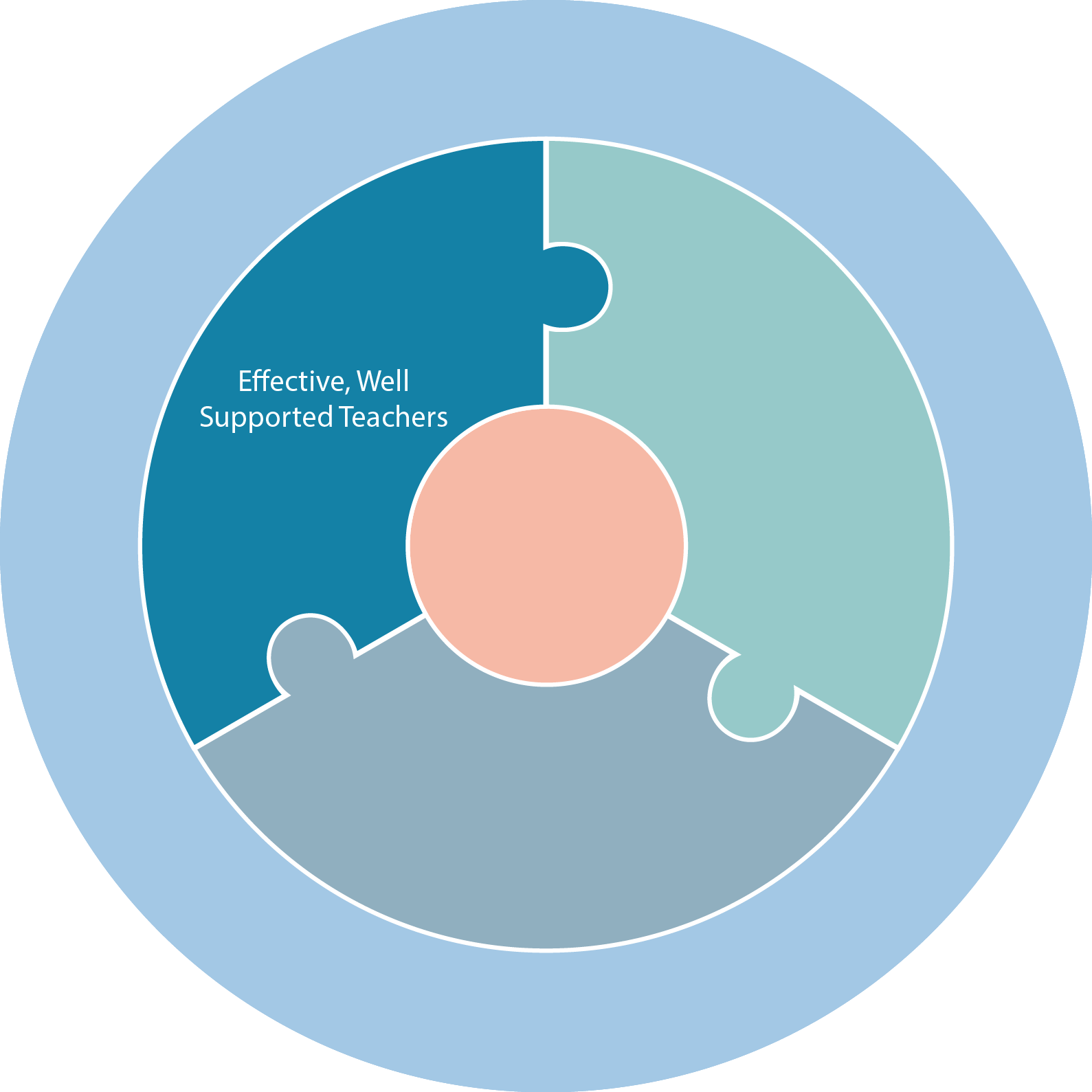1.0 Lever 2
EFFECTIVE, WELL-SUPPORTED TEACHERS
Campus leadership retains effective, well-supported teachers by strategically recruiting, selecting, assigning, and building the capacity of teachers so that all students have access to high-quality educators.

District Commitments:
District commitments describe what local education agencies do to ensure that schools are set up for success.
-
The district provides the campus with sufficient control over teacher hiring and placement.
-
The district provides incentives for the strongest teachers to work in the lowest-performing schools.
-
The district effectively recruits adequate numbers of qualified candidates.
-
The district has timely, efficient, and responsive hiring processes.
-
The district makes it possible for high-needs schools to be fully staffed by July 1st.
-
The district provides efficient organizational structures, processes, and supports to ensure opportunities for induction and continued development.
-
The district provides an evaluation system that identifies low and high performers and allows for opportunities to remove low performing staff.
-
District policies and practices ensure that campuses have effective, well-supported teachers.
Essential Actions
Essential Actions describe what the most effective schools do to support powerful teaching and learning. The first essential action listed under the priority is foundational — schools should address first in continuous improvement efforts, as they provide the foundation upon which the other essential actions develop.
2.1
FOUNDATIONAL ESSENTIAL ACTION
Recruit, select, assign, induct, and retain a full staff of highly qualified educators
-
The campus implements ongoing and proactive recruitment strategies that include many sources for high-quality candidates.
-
Clear selection criteria, protocols, hiring and induction processes are in place and align with the school’s vision, mission, values, and goals.
-
Campus leaders implement targeted and personalized strategies to support and retain staff, particularly high-performing staff.
-
Teacher placements are strategic based on student need and teacher strengths.
-
Grade-level and content-area teams have strong, supported teacher leaders trained in adult learning facilitation and team dynamics.
-
Preferred substitutes are recruited and retained.
2.2
Build teacher capacity through observation and feedback cycles
- Campus instructional leaders use normed tools and processes to conduct observations, capture trends, and track progress over time.
- Observation debrief conversations occur within 48 hours of observation and include high-leverage, bite-sized, clear, actionable feedback with clear models and opportunities to practice.
- Campus instructional leaders conduct follow up observations after coaching sessions to monitor implementation of feedback within agreed-upon time frames.
- Campus instructional leaders determine the frequency of observations based on teacher needs and student results on formative assessments.

